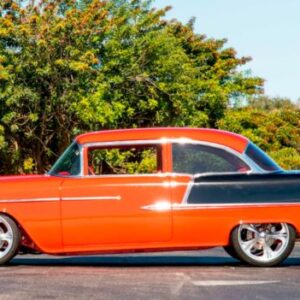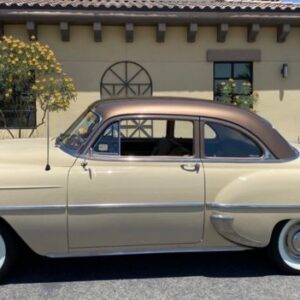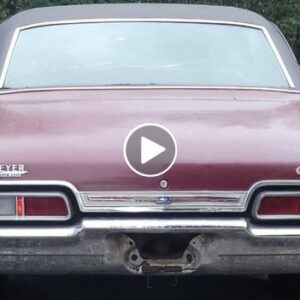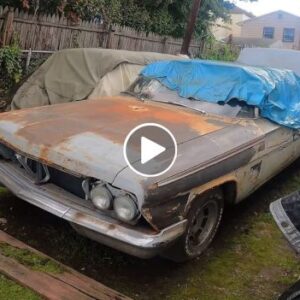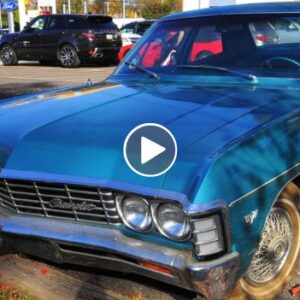The 1977 Pontiac Firebird is an iconic American muscle car that embodies the spirit of performance, style, and power that was synonymous with the era. In this article, we will explore the key features of this timeless classic, from its distinctive design and powerful engine options to its pop culture significance and enduring popularity among car enthusiasts and collectors.
1. Striking Design and Styling
The 1977 Pontiac Firebird’s design is a testament to the bold and aggressive styling that defined American muscle cars of the 1970s. With its sleek profile, muscular lines, and distinctive hood-mounted “shaker” scoop, the Firebird captures attention and exudes a sense of power and performance. Its iconic front fascia, featuring the legendary “screaming chicken” hood decal and quad headlamps, gives the Firebird a commanding presence on the road. The car’s design has made it a sought-after example of American automotive styling, and it remains a popular choice among collectors and enthusiasts.
Exterior Design
The 1977 Firebird’s exterior design is characterized by its long hood, sloping roofline, and short rear deck, which give it an unmistakable muscle car appearance. The front end is dominated by the large, aggressive grille, flanked by quad headlamps and the Pontiac arrowhead emblem. One of the most memorable aspects of the 1977 Firebird’s design is the hood-mounted “shaker” scoop, which not only added to the car’s aggressive appearance but also served as a functional air intake for the engine.
Another iconic design element of the 1977 Pontiac Firebird, particularly in the Trans Am model, is the “screaming chicken” hood decal, which features a bold, stylized bird graphic with outstretched wings. This distinctive emblem became synonymous with the Firebird and added a unique visual flair to the car’s overall design.
The car’s muscular fenders and wide stance further accentuate its performance-oriented nature, while the rear end features a subtle spoiler and distinctive taillights that add to the Firebird’s cohesive design language.
Interior Design
The interior of the 1977 Pontiac Firebird was designed with a focus on driver comfort and ergonomics. The cabin features a cockpit-style dashboard layout, with gauges and controls angled towards the driver for easy access and visibility. The instrument cluster is adorned with a combination of round dials and warning lights, giving the driver all the necessary information at a glance.
The Firebird’s seating is designed for up to four occupants, with front bucket seats and a rear bench seat that provides ample space for passengers. The seats themselves are upholstered with a choice of materials, including vinyl, cloth, or optional leather. These materials, combined with the available color combinations, create a comfortable and stylish cabin environment.
Luxury features such as power windows, power door locks, and optional air conditioning ensure that the 1977 Firebird’s interior is not only visually appealing but also comfortable and convenient for its occupants.
2. Powerful Performance and Engine Options
The 1977 Pontiac Firebird offered a range of engine options, catering to drivers seeking both power and efficiency. The base model came equipped with a 231 cubic inch (3.8-liter) V6 engine, producing 105 horsepower. However, for those craving more muscle, Pontiac also offered the Firebird Formula and Trans Am models, which featured an optional 400 cubic inch (6.6-liter) V8 engine, generating up to 200 horsepower. This powerful V8 option provided the Firebird with impressive acceleration and a thrilling driving experience, solidifying its status as a true American muscle car.
Engine Options
The Firebird’s base model came with a 231 cubic inch (3.8-liter) V6 engine, producing 105 horsepower. This engine provided decent performance for everyday driving, but the true power of the 1977 Firebird was found in its Formula and Trans Am models.
The Formula and Trans Am models featured an optional 400 cubic inch (6.6-liter) V8 engine, generating up to 200 horsepower, which offered a significant boost in performance compared to the base V6 engine. This powerful V8 provided the Firebird with impressive acceleration and a thrilling driving experience, solidifying its status as a true American muscle car.
Additionally, the 1977 Firebird Trans Am was available with the W72 performance package, which included a higher-output version of the 400 cubic inch V8 engine, producing 220 horsepower. This package also featured a revised camshaft, chrome valve covers, and a larger exhaust system, further enhancing the car’s performance capabilities.
Transmission Options
The 1977 Pontiac Firebird was available with several transmission options, catering to a range of driving preferences. A three-speed manual transmission was standard on the base model, while a four-speed manual and a three-speed automatic transmission were also available as optional upgrades. The Formula and Trans Am models offered the four-speed manual and the three-speed automatic as standard equipment, depending on the chosen engine.
Suspension and Handling
Power steering was standard on all models, making it easier to maneuver the car in tight spaces and during spirited driving. The Trans Am model featured a stiffer suspension setup, larger front and rear sway bars, and wider tires, all of which contributed to enhanced handling and cornering capabilities.
Braking System
The 1977 Firebird came with front disc brakes and rear drum brakes as standard equipment, providing adequate stopping power for the car. However, an optional upgrade to four-wheel disc brakes was also available, further improving the Firebird’s braking performance.
3. Sales and Production
In 1977, Pontiac produced a total of 155,735 Firebirds, a significant increase compared to the previous year’s production of 110,775 units. This production number includes all variants of the Firebird, such as the base model, the Esprit, the Formula, and the top-of-the-line Trans Am. The rise in production numbers can be seen as a testament to the car’s popularity and demand among consumers.
The Trans Am, in particular, saw a substantial boost in sales for the 1977 model year. Pontiac sold 68,745 Trans Am models in 1977, nearly quadrupling the sales of 19,073 units in 1976. This spike in sales can be attributed to the car’s starring role in “Smokey and the Bandit,” as well as its powerful performance and striking design.
4. Pop Culture Significance and Enduring Popularity
The 1977 Pontiac Firebird’s pop culture significance has played a major role in its enduring popularity. The car gained widespread fame as the vehicle of choice for Burt Reynolds’ character in the hit 1977 film “Smokey and the Bandit.” This cinematic association helped cement the Firebird’s status as an icon of American car culture and has contributed to its lasting appeal among collectors and enthusiasts.
In conclusion, the 1977 Pontiac Firebird is a classic American muscle car that showcases the best of Pontiac’s design and engineering prowess during its time. Its striking design, powerful engine options, and luxurious features have made it a favorite among car enthusiasts and collectors, ensuring its place in automotive history as a beloved and valuable classic.

